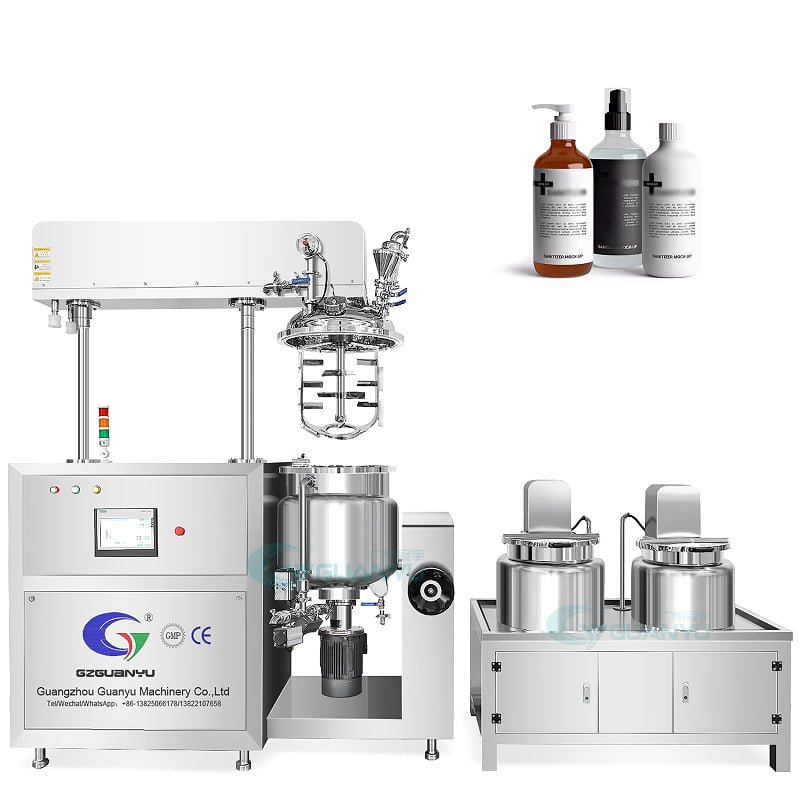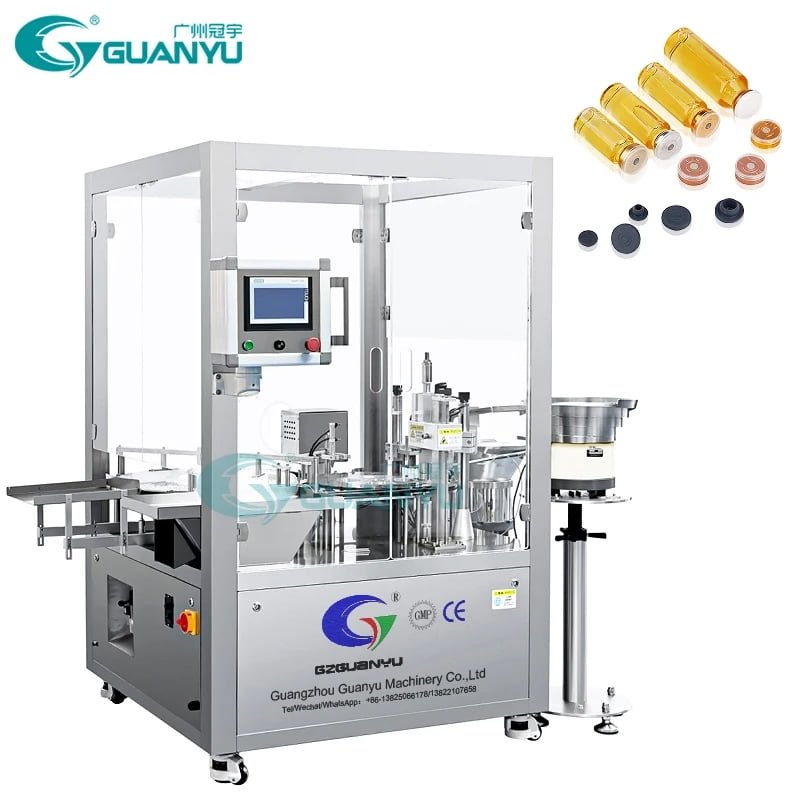Mayonnaise, ein Grundnahrungsmittel in vielen Küchen, ist ein vielseitiges Gewürz, das weltweit verwendet wird. Seine cremige Textur und sein reichhaltiger Geschmack machen es zu einer idealen Ergänzung zu Sandwiches, Salate, und zahlreiche andere Gerichte. Doch die Herstellung der perfekten Mayonnaise ist ein komplizierter Prozess, der Präzision und die richtige Ausrüstung erfordert. Eine entscheidende Komponente in diesem Prozess ist der Mischrührer, Dadurch wird sichergestellt, dass die Zutaten gründlich vermischt werden, um die gewünschte Konsistenz und den gewünschten Geschmack zu erzielen. Dieser Artikel befasst sich mit den verschiedenen Arten von Mischreaktoren, die für die Herstellung von Mayonnaise geeignet sind, diskutieren
Die Wissenschaft hinter Mayonnaise
Bevor Sie die geeigneten Mischreaktoren erkunden, Es ist wichtig, die Wissenschaft hinter Mayonnaise zu verstehen. Mayonnaise ist eine Emulsion, was bedeutet, dass es sich in diesem Fall um eine Mischung aus zwei nicht mischbaren Flüssigkeiten handelt, Öl und Wasser (oder Essig und Zitronensaft). Um diese Flüssigkeiten zu emulgieren, ist eine dritte Zutat erforderlich, ein Emulgator, Bei Mayonnaise handelt es sich normalerweise um Eigelb. Der Emulgator stabilisiert die Mischung, verhindert die Trennung von Öl und Wasser.
Die Herstellung dieser stabilen Emulsion erfordert kräftiges Mischen, um das Öl in winzige Tröpfchen aufzuspalten, die im Wasser verteilt sind. Je kleiner die Tröpfchen, desto stabiler ist die Emulsion, was zu einem glatteren Ergebnis führt, cremigere Mayonnaise. Hier kommt der Mischreaktor ins Spiel.

Arten von Mischrührwerk
Zur Herstellung von Mayonnaise können verschiedene Arten von Mischreaktoren verwendet werden, jedes mit seinen einzigartigen Vorteilen. Die Wahl des Reaktors hängt von verschiedenen Faktoren ab, einschließlich des Produktionsumfangs, gewünschte Textur, und Effizienz. Die wichtigsten Arten von Mischreaktoren, die für die Mayonnaise-Herstellung geeignet sind, sind::
- Hochschürze Mixer
- Homogenisten
- Statische Mischer
- Kolloidmühlen
- Planetenmischer
1. Hochschürze Mixer
Hochschermischer werden in der Lebensmittelindustrie häufig eingesetzt, da sie in der Lage sind, schnell feine Emulsionen herzustellen. Sie wirken, indem sie starke Scherkräfte auf die Mischung ausüben, Dabei wird das Öl in mikroskopisch kleine Tröpfchen zerlegt. Dies wird durch einen Rotor-Stator-Mechanismus erreicht, Dabei dreht sich der Rotor innerhalb eines stationären Stators mit hoher Geschwindigkeit, wodurch eine kraftvolle Mischwirkung entsteht.
Vorteile:
- Effizienz: Hochschermischer können in kurzer Zeit eine stabile Emulsion erzeugen.
- Vielseitigkeit: Sie eignen sich sowohl für die Klein- als auch für die Großserienproduktion.
- Konsistenz: Sie sorgen für eine gleichmäßige Textur im Endprodukt.
Anwendungen in der Mayonnaise-Herstellung:
Hochschermischer eignen sich ideal für die Mayonnaise-Herstellung, da sie hochviskose Produkte verarbeiten und mit minimalem Aufwand eine stabile Emulsion erzeugen können. Sie sind besonders vorteilhaft in industriellen Umgebungen, in denen große Mengen Mayonnaise schnell und gleichmäßig hergestellt werden müssen.


2. Homogenisten
Homogenisatoren sind eine weitere beliebte Wahl für die Mayonnaise-Herstellung. Sie arbeiten, indem sie die Mischung unter hohem Druck durch einen schmalen Spalt drücken, Dadurch werden die Öltröpfchen zerkleinert und eine feine Emulsion entsteht. Es gibt zwei Haupttypen von Homogenisatoren: Hochdruck und Ultraschall.
Vorteile:
- Feine Emulsion: Homogenisatoren können sehr feine Tröpfchen erzeugen, was zu einer glatten Textur führt.
- Skalierbarkeit: Geeignet sowohl für die Produktion im Labormaßstab als auch im industriellen Maßstab.
- Kontrolle: Sie bieten eine präzise Kontrolle über die Eigenschaften der Emulsion.
Anwendungen in der Mayonnaise-Herstellung:
Homogenisatoren sind besonders nützlich bei der Herstellung von Mayonnaise im großen Maßstab. Sie sorgen für Gleichmäßigkeit und Stabilität im Endprodukt, Damit sind sie ideal für die kommerzielle Mayonnaise-Produktion.

3. Statische Mischer
Statische Mischer sind Geräte ohne bewegliche Teile, bestehend aus einer Reihe stationärer Elemente, die in einem Rohr oder einer Röhre angeordnet sind. Während die Zutaten durch den Mixer laufen, sie werden kontinuierlich geteilt und neu kombiniert, eine Emulsion erzeugen.
Vorteile:
- Geringer Wartungsaufwand: Ohne bewegliche Teile, Statische Mischer erfordern nur minimale Wartung.
- Energieeffizienz: Sie verbrauchen weniger Energie im Vergleich zu Mischern und Homogenisatoren mit hoher Scherung.
- Kompaktes Design: Statische Mischer sind kompakt und einfach zu installieren.
Anwendungen in der Mayonnaise-Herstellung:
Statische Mischer eignen sich für kontinuierliche Mayonnaise-Produktionsprozesse. Sie sind besonders nützlich, wenn Mayonnaise in kleinerem Maßstab hergestellt wird oder wenn Energieeffizienz und geringer Wartungsaufwand im Vordergrund stehen.
4. Kolloidmühlen
Kolloidmühlen verwenden ein Rotor-Stator-System ähnlich wie Hochschermischer, jedoch mit einem anderen Mechanismus. Das Gemisch wird durch einen schmalen Spalt zwischen Rotor und Stator geleitet, die angepasst werden kann, um die Größe der Tröpfchen zu steuern. Die starken Scherkräfte zersetzen die Öltröpfchen, eine feine Emulsion entsteht.
Vorteile:
- Feine Tröpfchen: Kolloidmühlen erzeugen sehr feine Emulsionen.
- Verstellbarkeit: Der Spalt zwischen Rotor und Stator kann angepasst werden, um die Eigenschaften der Emulsion zu steuern.
- Vielseitigkeit: Geeignet für verschiedene Lebensmittel, einschließlich Mayonnaise.
Anwendungen in der Mayonnaise-Herstellung:
Kolloidmühlen sind ideal für die Herstellung von Mayonnaise mit einer sehr glatten Textur. Sie werden häufig in industriellen Umgebungen eingesetzt, wo Präzision und Kontrolle über die Emulsion von entscheidender Bedeutung sind.
5. Planetenmischer
Planetenmischer werden in Bäckereien und der Lebensmittelindustrie häufig zum Mischen von Teigen eingesetzt, Teige, und Emulsionen. Sie bestehen aus einer feststehenden Schüssel und einem Rührwerkzeug, das sich um seine Achse dreht und gleichzeitig die Schüssel umkreist, ahmt die Bewegung von Planeten nach.
Vorteile:
- Vielseitigkeit: Kann für eine Vielzahl von Mischanwendungen verwendet werden.
- Konsistenz: Sorgt für gründliches Mischen, Gewährleistung einer gleichmäßigen Textur.
- Skalierbarkeit: Erhältlich in verschiedenen Größen, Geeignet für kleine und große Produktionen.
Anwendungen in der Mayonnaise-Herstellung:
Planetenmischer eignen sich für die Mayonnaiseproduktion im kleinen bis mittleren Maßstab. Sie sind besonders nützlich in der handwerklichen Produktion und in der Kleinserienproduktion, wo Flexibilität und Konsistenz wichtig sind.
Auswahl des richtigen Mischreaktors
Die Auswahl des geeigneten Mischreaktors für die Mayonnaise-Herstellung hängt von mehreren Faktoren ab:
- Produktionsskala: Für groß angelegte Produktion, Hochschermischer, Homogenisten, und Kolloidmühlen sind aufgrund ihrer Effizienz und der Fähigkeit, große Volumina zu verarbeiten, ideal. Für kleinere oder handwerkliche Produktion, Planetenmischer und statische Mischer sind möglicherweise besser geeignet.
- Gewünschte Textur: Wenn eine sehr glatte und feine Textur gewünscht wird, Homogenisatoren und Kolloidmühlen sind die besten Optionen. Mischer mit hoher Scherung sorgen ebenfalls für eine glatte Textur, erreichen jedoch möglicherweise nicht den gleichen Feinheitsgrad.
- Energieeffizienz: Statische Mischer sind die energieeffizienteste Option, Damit eignen sie sich ideal für kontinuierliche Produktionsprozesse, bei denen der Energieverbrauch eine Rolle spielt.
- Wartung und Benutzerfreundlichkeit: Statische Mischer erfordern nur minimale Wartung, da sie keine beweglichen Teile haben. Im Gegensatz, Mischer und Homogenisatoren mit hoher Scherung erfordern möglicherweise mehr Wartung, bieten aber eine bessere Kontrolle und Effizienz.
Abschluss
Die Herstellung von Mayonnaise ist ein heikler Prozess, der präzises Mischen erfordert, um eine stabile Emulsion mit der gewünschten Textur und dem gewünschten Geschmack zu erzeugen. Verschiedene Mischreaktoren, einschließlich Hochschermischer, Homogenisten, statische Mischer, Kolloidmühlen, und Planetenmischer, bieten je nach Produktionsmaßstab und spezifischen Anforderungen unterschiedliche Vorteile.
Die Wahl des richtigen Mischreaktors ist entscheidend für die perfekte Mayonnaise, sei es für die handwerkliche Produktion im kleinen Maßstab oder für die industrielle Fertigung im großen Maßstab. Durch das Verständnis der Merkmale und Vorteile jedes Reaktortyps, Produzenten können fundierte Entscheidungen treffen, die zu einer hohen Qualität führen, konsistentes Produkt, das die Erwartungen der Verbraucher erfüllt.
Letztlich, Der Schlüssel zur erfolgreichen Mayonnaise-Produktion liegt in der sorgfältigen Auswahl der Ausrüstung, die den spezifischen Anforderungen des Produktionsprozesses entspricht, um sicherzustellen, dass jede Charge reibungslos verläuft, cremig, und lecker.

